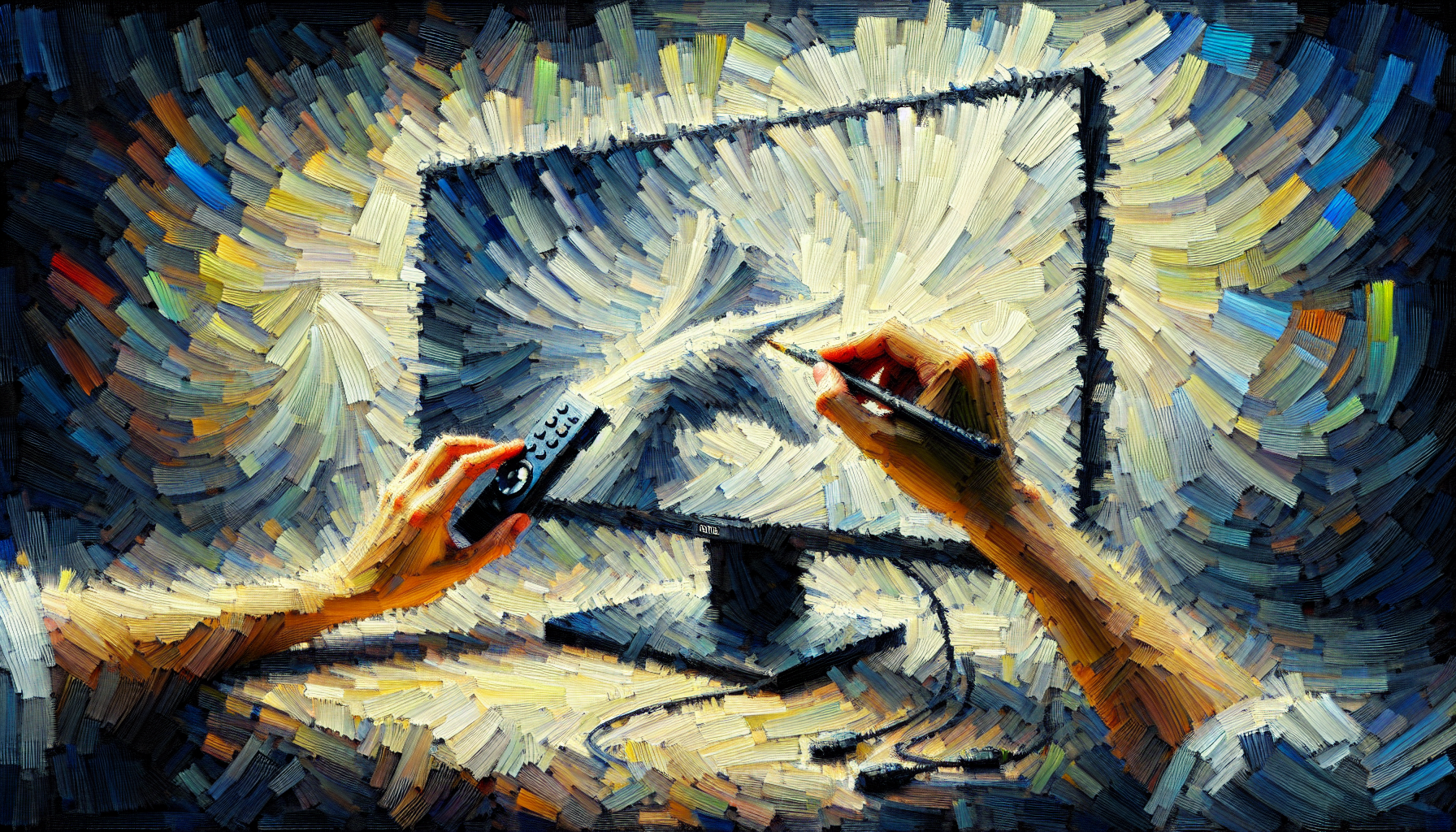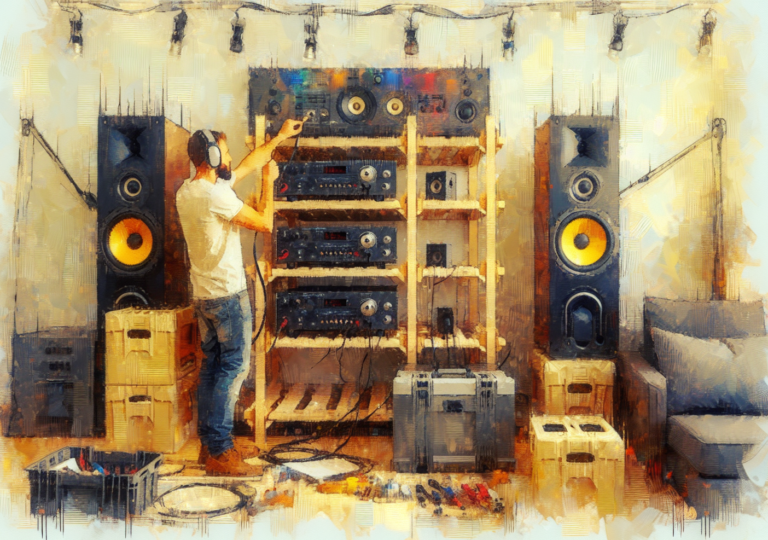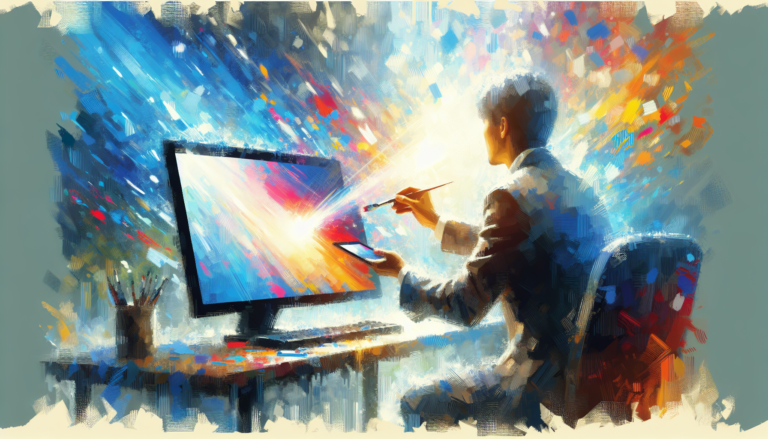Get Gaming-Ready: Calibrate Your Monitor like a Pro
Gaming Monitor Calibration Basics
So you’ve got yourself a gaming monitor, huh? Now it’s time to get it singing like a pro. Let’s break down why tuning up your screen isn’t just for the geeks.
Importance of Monitor Calibration
Getting your monitor just right can turn a decent gaming session into an epic showdown. We’re talking about nailing those colors, sharpness, and the all-important frame rates. It’s not just for showing off either; it makes your gaming a whole lot better. Imagine those in-game sunsets in Red Dead Redemption 2 looking so real you’d wanna take a photo. Well, that’s what good calibration does for you TruHu Blog.
And for the arty types among us who dabble in photo editing or graphic design, seeing what you’re supposed to is kind of a big deal. Your wallet may not love a full calibration setup, but it’s worth considering if you need spot-on color from the start RTINGS.
Then there’s the refresh rate thing – if you’re playing fast-action games, a smooth sailing 144Hz or higher is your best friend (Arzopa). Anything below 5ms in response time is golden for keeping those ghostly traces and blur at bay.
Impact on Gaming Performance
Tweek those color and temperature settings and suddenly, you’re in another world! Whether you’re journeying through the wilds of The Witcher 3 or galloping over the plains in Red Dead, the right calibration makes everything pop TruHu Blog.
And listen, those settings like Adaptive Sync or FreeSync can be your secret weapon. Sure, they help keep things smooth, but they mess with your frame rates too. Getting them right for your own gaming style? Game-changing TruHu Blog.
Getting your screen to look its very best isn’t just about saving face in front of buddies. It’s about making sure every pixel is working in your favor, giving you the edge in every game. Ready, set, game on!
Adjusting Color Settings
Alright folks, let’s talk about getting those colors just right on your monitor. It might sound a bit techy, but adjusting those settings can really spruce up your gaming experience. You know, when the visuals look so good, it’s like you’ve been sucked right into the game itself.
Play with the Colors
Tweaking your gaming monitor’s color space settings can make all the difference, especially if you’re diving head-first into visually stunning games like RDR2 or The Witcher 3. It’s like giving your screen a fresh pair of eyes. Different games seem to like different color types. So, if you’re into shooters like Counter-Strike, cooler tones hover around 6500K with 80-90% color saturation. But if you’re an RPG fan, you might enjoy warmer tones around 5500K with higher saturation levels.
Depending on the game’s vibe, adjusting color tones can make it pop. Cooler shades naturally suit spooky games, while warmer hues wrap you in that cozy blanket kind of feeling.
Play with the Temps (Temperature, that is)
Now, let’s chat about another tweak – the temperature settings on your monitor. This isn’t about how hot your computer’s getting (though keep an eye on that too!). We’re talking about the kind of backdrop or mood you want your games to set.
Think of it like adjusting the lighting in your living room. Cooler temps, somewhere near the 6500K mark, might make horror games that bit more chilling. Meanwhile, warmer temps (around 5500K) might suit the cozy hug of softer genres. Suitably tinkering with these settings can boost those graphics right up.
By fiddling with these color and temperature settings on your gaming monitor, you can kind of tailor the scene to fit the mood of whatever world you’re stepping into. It’s like having a wizard’s wand for your gaming display, upping both the enjoyment and experience. Want more tips? We’ve got a guide on how to pick the best gaming monitor for your gear—don’t miss it!
Optimizing Monitor Modes
So ya wanna get the most outta your gaming monitor, huh? Calibrating that bad boy for wicked display settings can up your game big time. Tweaking monitor modes for your fave games and getting what’s up with refresh rates is key.
Performance Modes for Specific Games
Listen up, customizing your monitor for different game types can totally amp up your play. Say you’re into shooters like Apex Legends or Call of Duty: crank up those refresh rates to stay in the zone. Adjust the colors, response times, and contrast just right to see everything clearer, cut down the blur, and respond faster. Trust me, every little tweak gets you closer to victory.
Each game type likes its colors different. If you’re a shooter fan, cooler vibes around 6500K with a splash of 80-90% color make everything pop just right. Into RPGs? Go warmer, like 5500K, and let that color saturation hit up to 90-100% for that awesomeness. And for race fans, keep it cool at 5800K and also around 80-90% saturation and you’re golden. Isn’t it wild how colors change the whole feel?
Importance of Refresh Rates
Here’s the deal: your monitor’s refresh rate is a game-changer. Going for a higher rate like 144Hz means games look smoother, and the action’s more intense. Sneaky side note: it might boost your game around 35%, especially if you’re all about quick reflexes. Ain’t that neat?
Grab yourself a monitor with a response time below 5ms to keep things sharp—no ghosting, no blur. Models like Acer Predator XB273K, ASUS VG278Q, or ViewSonic XG240R are legends in the field. They keep everything fast, giving you the upper hand.
Sprucing up your monitor modes and getting the lowdown on refresh rates can push your gaming into the stratosphere. Tailoring your settings for each game can transform your gaming adventures into unforgettable rides. Dive in and let those virtual worlds blow your mind!
Advanced Monitor Settings
Wanna play your games with top-notch visuals? Let’s fiddle with some mighty monitor settings like adaptive sync and refresh rates for a gaming trip that’ll knock your socks off.
Adaptive Sync and Refresh Rates
Adaptive sync tech, featuring the likes of AMD FreeSync or NVIDIA G-Sync, is a serious game-changer for us gamers. Think of it like a translator for your monitor and graphics card, getting them in sync so you don’t have to deal with those pesky screen tears or freezes. It’s all about smoother and more intuitive play, especially when things get real fast (TruHu Blog).
Now, here’s the deal: your monitor and graphics card need to be on the same wavelength with this sync technology. This matching makes sure that you don’t see any weird screen glitz, like tearing or flickering, so you really get pulled into the game without any distractions.
Mastering Color Accuracy
The colors you see on your screen can make your games pop. Getting your screen’s colors just right means you’ll be able to pick out those enemy snipers in the bushes or enjoy the beautiful game worlds you’re exploring. Calibrating your monitor’s colors right improves your gaming edge big-time.
For a classic color setting, aim for about 6500K. Sounds technical, right? It’s like the color of daylight at noon, giving your screen a natural, warm look (RTINGS).
But not all games paint the same picture. Do cooler colors for FPS games with lots of action and go warmer for RPGs where things are a bit more chill. For racing games, stick with neutral tones and turn the colors up a notch for full effect (Arzopa).
Oh, and don’t skip the gamma test! A 2.20 setting is kinda perfect, matching the sRGB curve’s brightness hoopla. If you mess with it too much, what you see might not actually be what’s there (RTINGS).
And quick note: For quick game reactions, a monitor response time of 5ms or less is fab. Popular ones like the Acer Predator XB273K or the ASUS VG278Q promise you fast response times and stellar refresh rates, making your gaming buttery smooth (Arzopa).
Tweak these few monitor settings, and you’re bound to have a gaming experience that’s as captivating as it is seamless. Happy gaming!
Hardware vs. Software Calibration
Alright, listen up, if you want that gaming rig to sing like a rockstar, you’ve got to get those display settings on point. We’re talking about calibration here—getting those colors and details just right so your screen’s not lying to your eyes. You’ve got two main roads to that sweet-spot clarity: hardware or software.
Using Calibration Devices
So, you’re thinking of going pro with this? Get yourself one of those fancy calibration gadgets, like a tristimulus colorimeter. This baby’s the gold standard when it comes to dialing in your monitor’s color accuracy. Think of it like hiring a personal stylist for your screen. The device achieves this by creating what’s called an ICC profile—a bit of tech magic ensuring your monitor sings true, bright colors (RTINGS).
Yeah, it’s a bit of a splurge—this tech isn’t cheap. Colorimeters, spectrophotometers, all sound a bit like sci-fi, right? But for pixel-perfect accuracy and keeping ’em colors consistent across your gaming gear, they’re unbeatable. Casual gamers, though, might think a second time because it’s sometimes like bringing a bazooka to a snowball fight in terms of cost (TFT Central).
Software Calibration Methods
Now, if tricks with gadgets aren’t your thing, don’t fret. There’s always the back door in—software calibration. We’re talking fiddling around with the settings already built into your monitor or those nifty tools your OS (that’s operating system for the tech-jargon lovers) already has.
With software calibration, you’re essentially the chef—adding a dash of brightness, a sprinkle of contrast, adjusting gamma levels, and tweaking color temp for that perfect view. Sure, maybe you won’t have the surgeon’s precision, but it’ll still clean up any bothersome display issues like nobody’s business—a solid quick fix for most folks out there just wanting better visuals without selling a kidney.
If you’re wanting to spruce up your display but keep the budget closer to a cup of coffee than a new console, software’s your friend. True, you might not hit the bullseye as with fancy tools, but you’ll get a snuff near that you’ll notice a major bump in color vibe and clarity.
Whether you’re opting for the full hardware shebang or the laid-back software tweakage, the endgame’s clear—crisp visuals that make your games pop like fireworks. Now you know the ropes, match up the method to your game style, wallet size, and thirst for color accuracy. Game on!
Practical Calibration Steps
Getting that sweet spot on your gaming monitor for ace visuals is pretty much a game in itself. Calibrating the display is where the magic happens. Let’s dig into how you can jazz up your screen’s colors using Windows’ and macOS’s tools.
Windows Color Calibration
Rolling with Windows? Here’s your routine to make your monitor envy-worthy:
- Kick things off by searching “Calibrate display color” in the search bar or pop over to the Control Panel.
- The on-screen guide will lead you through tweaking gamma, brightness, contrast, and color warmness. Adjust this magic formula to match your vibe and visuals.
- Fiddle with the settings until everything looks just right for you. After all, who wouldn’t want their gaming to be like stepping into a vibrant catalog?
By getting your hands dirty with the Windows Color Calibration tool, your games will pack a punch in the color department, making every moment pop like a graphic novel.
macOS Integrated Calibration
For folks chilling with macOS, fine-tuning your screen is as easy as pie:
- Head over to ‘System Preferences’ on your Mac.
- Tap into the ‘Monitors’ section and hit the ‘Color’ tab.
- Follow the breadcrumb trail of instructions to tweek color settings, brightness, and contrast—just the way you like it, no fuss.
- Tweak until those colors are as real as life. Perfect your setup so it screams clarity and sharpness.
Dive into the macOS calibration tool for a rock-solid and consistent visual treat while gaming. It’s like giving your gameplay a glow-up!
So, there you have it. Fine-tuning your monitor isn’t just about getting it to look good—it’s about making sure every dragon slayed or track raced is as clear as day. Stick to these steps on Windows or macOS, and keep your gaming experience wrapped in vivid, immersive visuals that’ll keep you hooked for hours. Game on, in full color!


